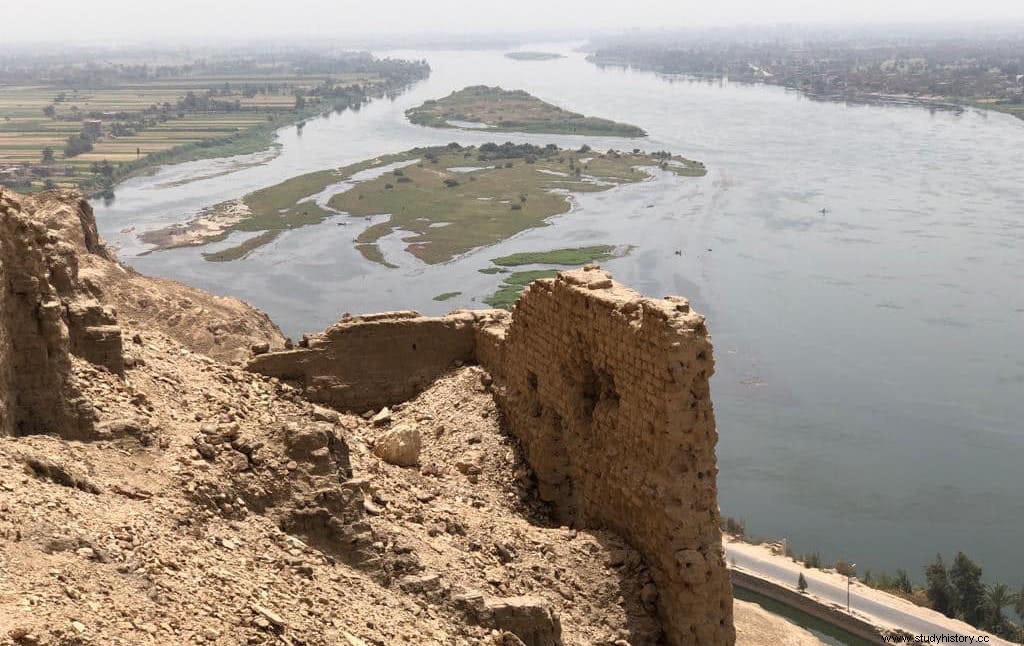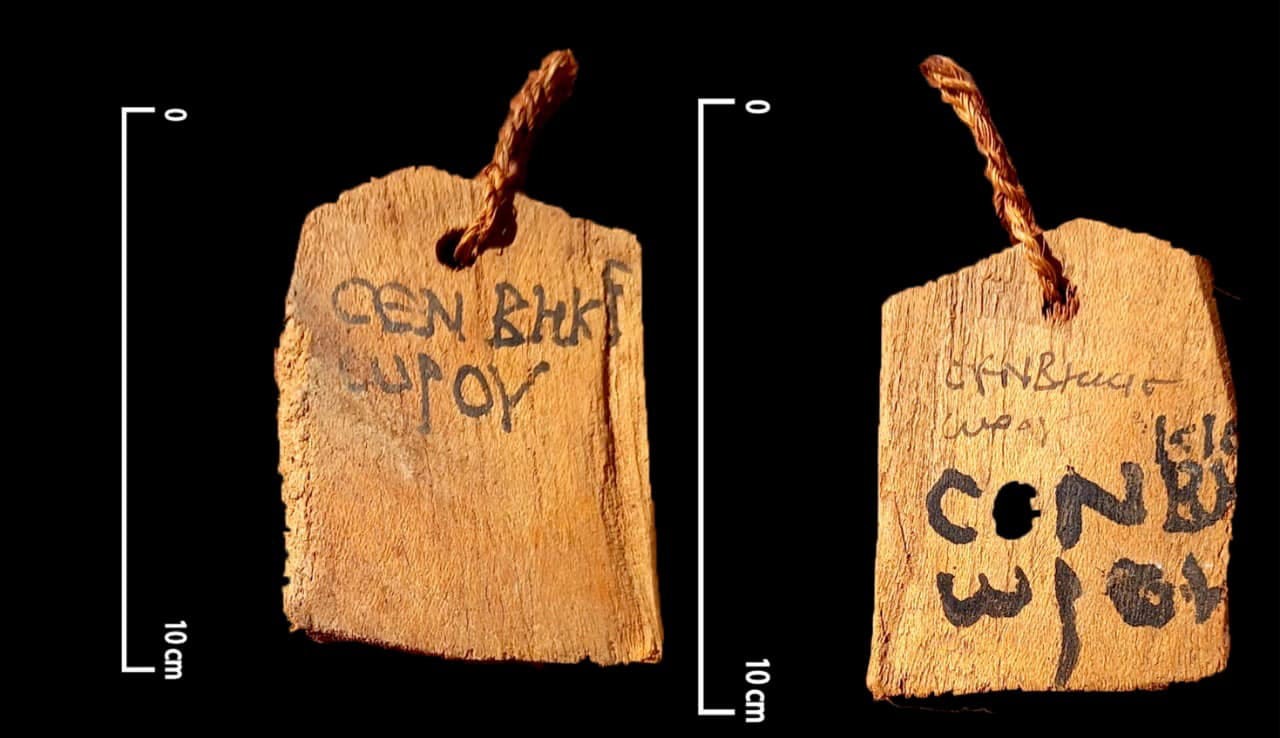The Egyptian archaeological mission operating in the Sohag region, on the west bank of the Nile about 6 kilometers from Akhmim (ancient Panopolis), discovered one of the checkpoints and watchtower and the remains of a temple dedicated to the goddess Isis, from the era of King Ptolemy III.
Dr. Mostafa Waziri, secretary general of the Supreme Council of Antiquities, explained that the checkpoint discovered is an adobe and brick building similar to the so-called Tower House , which was built for the purpose of inspection and monitoring of the traffic of goods between the regions, the collection of taxes and the safety of ships and navigation on the Nile.
Waziri added that the discovered temple was dedicated to the goddess Isis, and is 33 meters long and 14 meters wide, with a north-south axis.

According to Dr. Ayman Ashmawy, head of the Egyptian Antiquities Sector of the Supreme Council of Antiquities, the temple consists of an open rectangular hall, in the middle of which is a row of four columns, followed by a transverse hall with two columns leading to the altar.
In the central part of the temple there is a staircase, and the floor was formed from stone slabs of local limestone.
During excavations, the mission found a limestone purification basin and votive plaque on the north side of the temple. On the north side, 5 ostraca with inscriptions in Demotic script were discovered, in addition to 38 coins dating from Roman times and a small part of a limestone column.
Also some animal bones, which proved through their study to be remains of the food of the temple priests.

For his part, Professor Mohamed Abdel-Badi, head of the Central Administration of Antiquities of Upper Egypt, said that the mission also managed to discover the houses of one of the foremen and several remnants of documents related to the names, salaries and tasks of workers, in addition to about 85 tombs dating from different periods from the end of the Old Kingdom to the Ptolemaic period. Their layout varies, including tombs cut at various levels into the mountain, tombs with one or more burial shafts, and other tombs with a ramp ending in a burial chamber.
In tombs dating back to the Ptolemaic era, 30 mummies were found with inscriptions written in ancient Greek, hieratic and demotic script.

These inscriptions generally include the name of the deceased, the name of his father or mother, his address, occupation and age at death, in addition to some supplications to ancient Egyptian deities.
The mission also carried out documentation work on a group of quarries at the site, where the mission cleaned it and reinforced the Ramesses III cave painting mentioned in the Haris papyrus. It states that King Ramses III sent 38 skilled stonemasons to this area (Jabal Haridi) to cut stones to build a temple for him in the 10th region.
Three other quarries from the Ptolemaic era were documented, proving that Jabal Haridi was an important source of stone at this time, due to its high quality.
